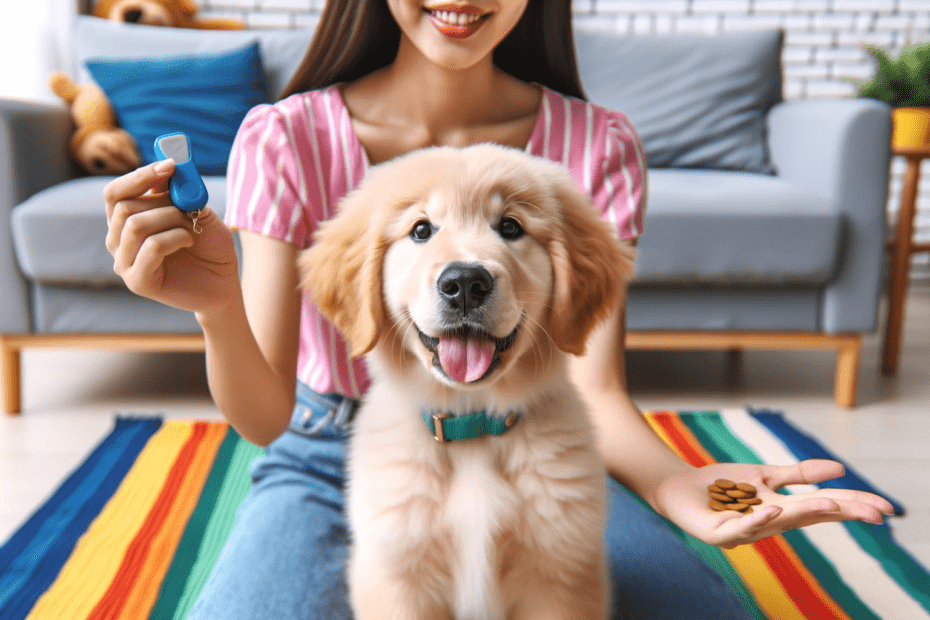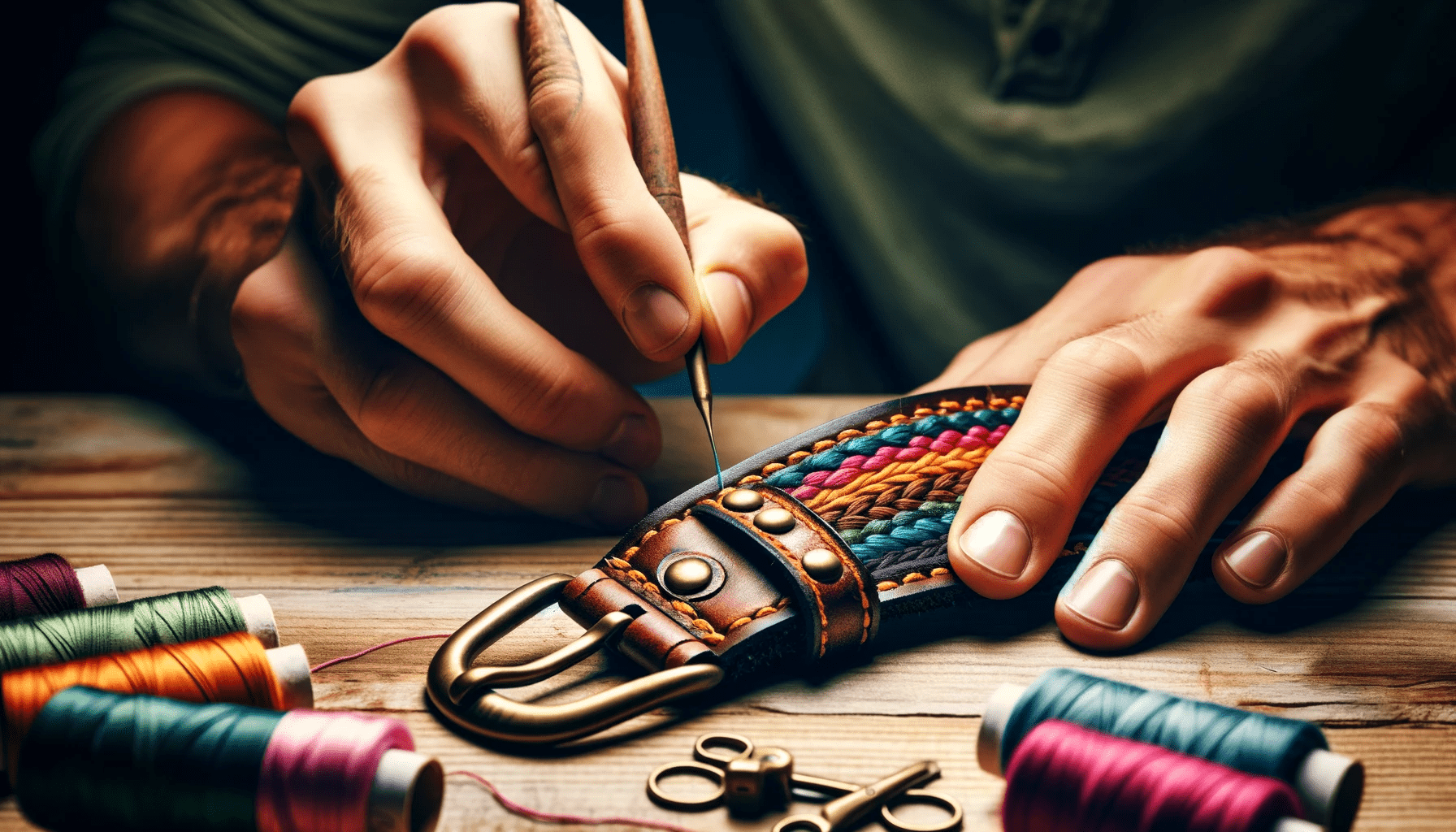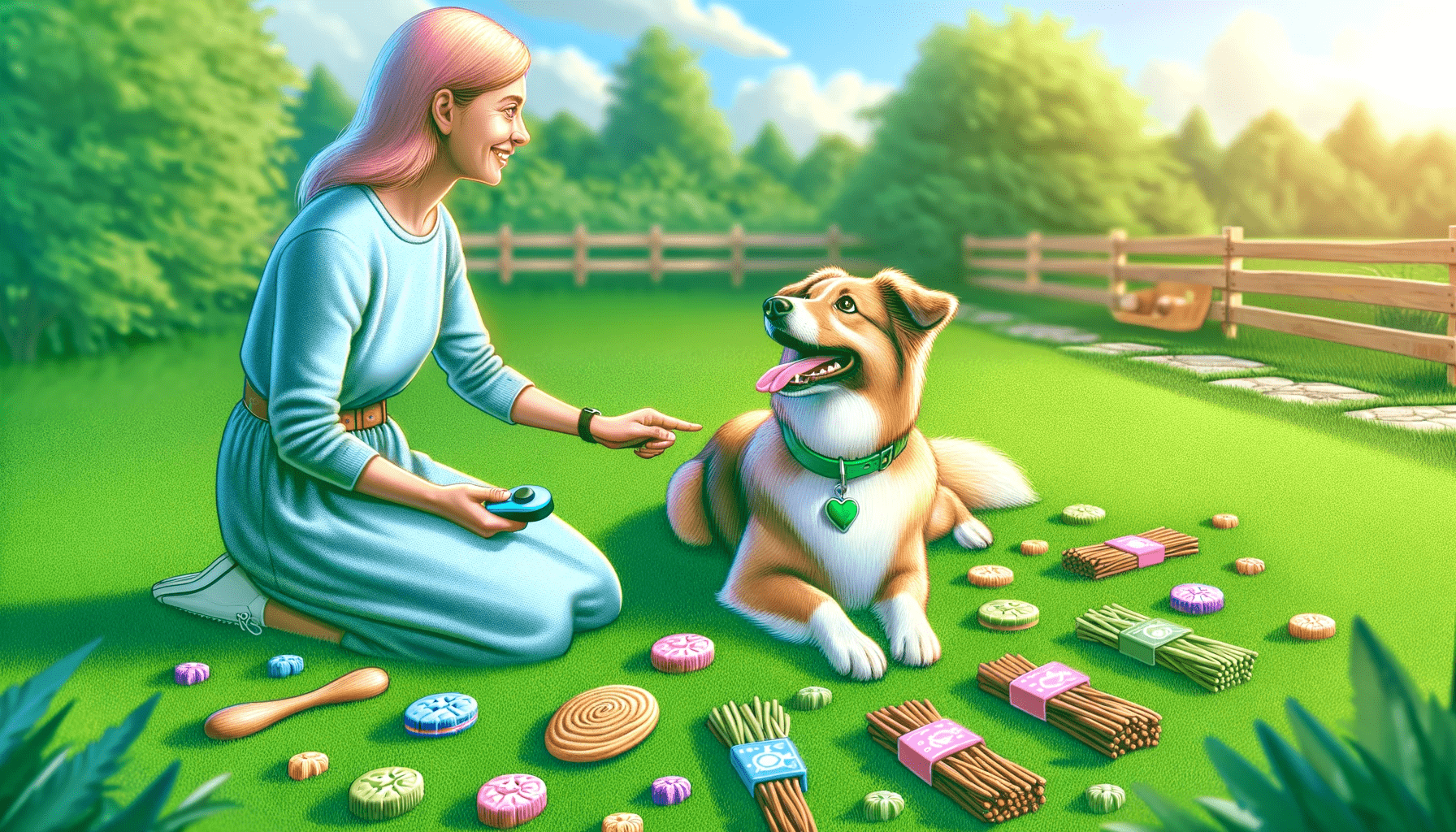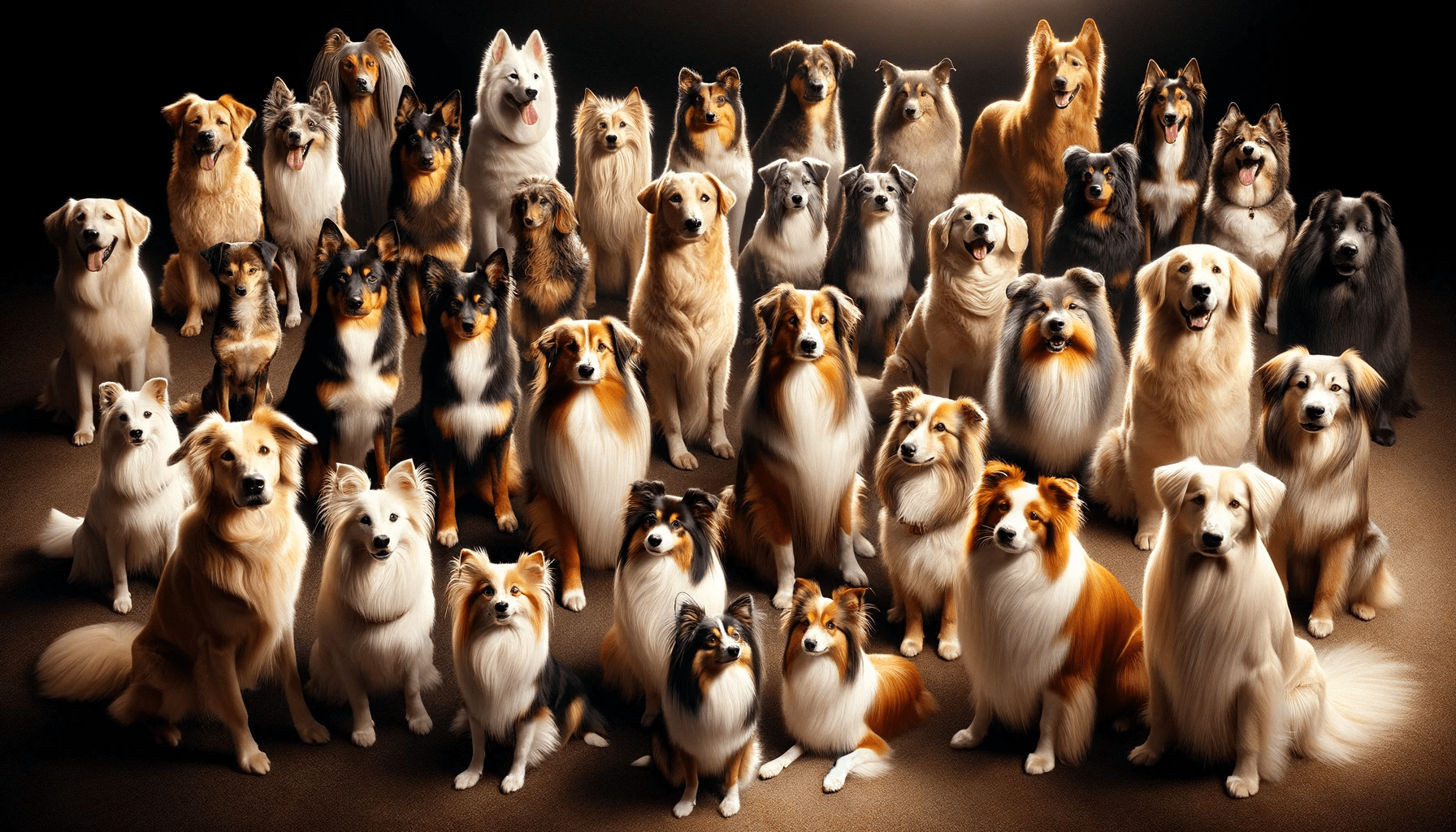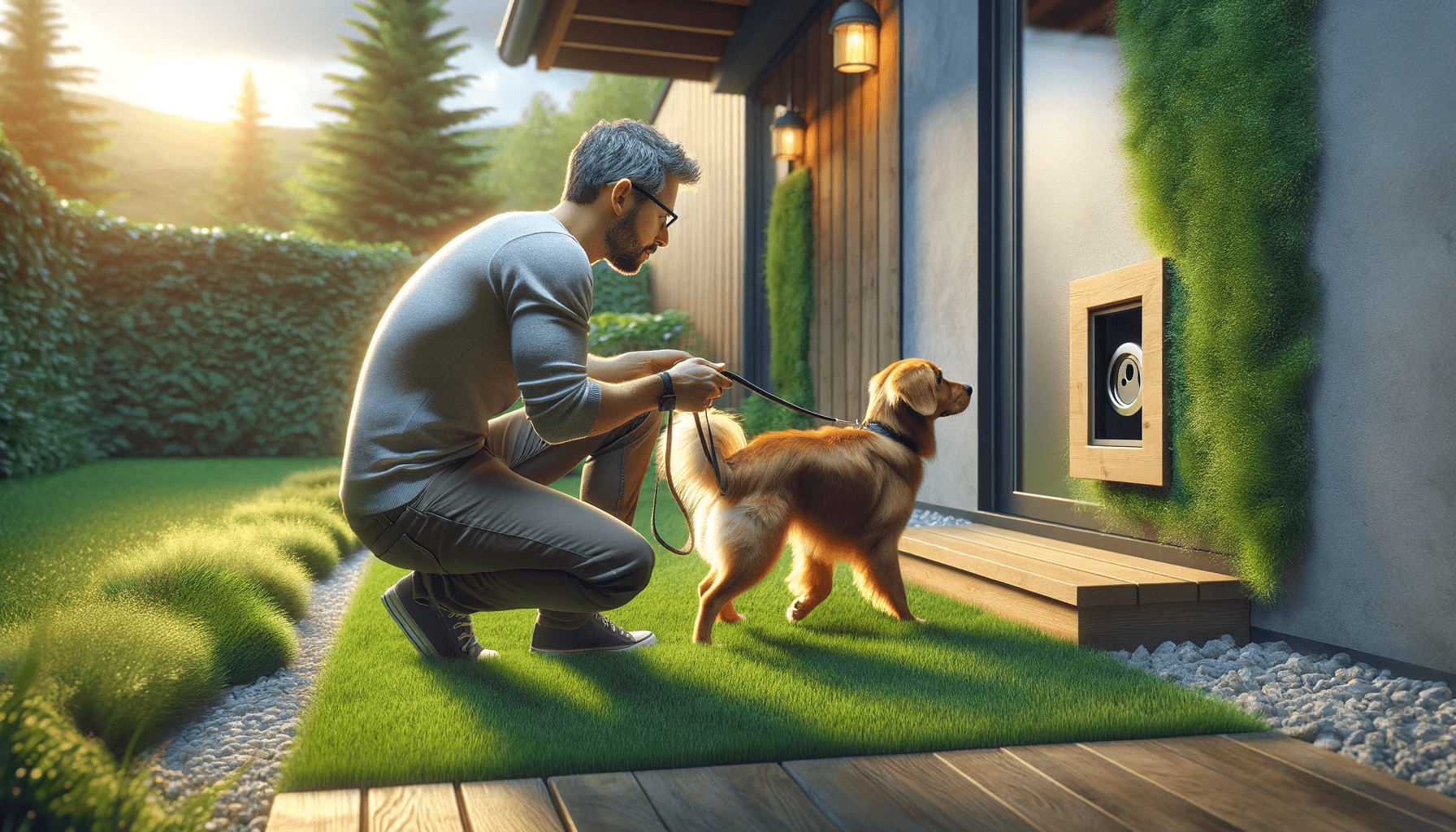Are you ready to train your puppy using a clicker?
In this step-by-step guide, we will show you how to effectively clicker train your furry friend.
You'll learn the basics of clicker training, how to choose the right clicker, and set up a training space.
We'll also cover teaching basic commands, troubleshooting common challenges, and advancing your puppy's skills.
Get ready to build a strong bond with your puppy through the power of clicker training.
Key Takeaways
- Clicker training uses positive reinforcement to teach new behaviors.
- Choosing the right clicker involves considering size, sound, and ease of use.
- Setting up a quiet and distraction-free training space is important.
- Consistency, patience, and celebration of small successes are key in clicker training puppies.
Clicker Training Basics
To begin clicker training your puppy, you'll need a clicker and some small treats. Clicker training is a popular method that uses positive reinforcement to teach your puppy new behaviors.
The clicker is a small handheld device that makes a distinct clicking sound when pressed. This sound is used as a marker to signal to your puppy that they've done something right.
The benefits of clicker training are numerous. It allows for clear communication between you and your puppy, making it easier for them to understand what you want from them. It also helps to build a strong bond between you and your puppy, as it's a fun and interactive way to train.
Clicker training techniques involve breaking down desired behaviors into small steps and rewarding each step with a click and a treat. This helps to shape and reinforce the behavior you want your puppy to learn.
Remember to be patient and consistent with your training, and soon your puppy will be responding to your clicker cues with enthusiasm.
Choosing the Right Clicker
When choosing the right clicker for clicker training your puppy, consider the size, sound, and ease of use of the clicker.
The clicker should be small enough to fit comfortably in your hand, allowing for easy and precise clicking.
The sound of the clicker should be distinct and clear, as this is what your puppy will associate with positive reinforcement. Look for clickers that produce a loud and consistent sound, so it can be easily heard by your puppy.
In terms of ease of use, opt for clickers with a simple mechanism that can be easily operated with one hand.
Different types of clickers and their benefits for puppy training include:
- Box clickers: These clickers have a small metal strip that's pressed to make the clicking sound. They're durable and produce a sharp sound, making them effective for training sessions.
- Button clickers: These clickers have a large button that can be pressed to produce the click sound. They're comfortable to hold and easy to operate, making them suitable for beginners.
- Whistle clickers: These clickers produce a whistle-like sound and are useful for training sessions that require longer distances, such as outdoor training or recall training.
- Clicker apps: These are smartphone applications that simulate the sound of a clicker. They're convenient and always accessible, making them a good option for training on the go.
To introduce the clicker to your puppy and ensure a positive association, start by associating the sound of the clicker with a reward. Click the clicker and immediately follow it with a treat or praise. Repeat this process several times, gradually increasing the time between the click and the reward.
This will help your puppy understand that the clicker sound signifies something positive and rewarding. Remember to keep the training sessions short and fun, and always end on a positive note.
Setting Up a Training Space
To ensure successful clicker training, it's important to choose an ideal training location. Look for a quiet and distraction-free area where you can focus on training your puppy.
Additionally, organize all the necessary training tools such as treats, clicker, and toys in a designated space to keep everything within reach during your training sessions.
Choosing Ideal Training Location
Choose a designated training space for your puppy that's free from distractions. This will help your puppy focus on the training and prevent any unwanted interruptions. Here are some tips to help you choose the ideal training location:
- Find a quiet area in your home where you can train your puppy without any disturbances.
- Make sure the space is well-lit so that both you and your puppy can see each other clearly.
- Remove any potential hazards or objects that might distract your puppy during the training session.
- Use a non-slip surface to prevent your puppy from slipping and getting injured during training.
By selecting the right training location, you can create a conducive environment for effective clicker training sessions with your puppy.
Stay tuned for the next subtopic, which will discuss finding the best clicker training treats and how to introduce clicker training to an older dog.
Organizing Necessary Training Tools
To effectively set up your training space, make sure you have all the necessary tools and equipment readily available. Start by organizing training treats in a designated container or treat pouch, making it easy to access and reward your puppy quickly. This will help reinforce positive behavior during training sessions.
Next, finding the right training leash is crucial. Look for a leash that's lightweight and adjustable to ensure a comfortable fit for your puppy. It should be long enough to allow freedom of movement but not too long that it becomes a distraction. Consider using a retractable leash for outdoor training sessions, as it provides flexibility and control.
Getting Started With Clicks and Treats
Start by gathering your clicker and a variety of small, tasty treats. These tools will be essential for successfully implementing clicker training with your puppy.
Here are a few important points to consider as you begin your clicker training journey:
- Clear Communication: Clicker training provides a clear and precise way to communicate with your puppy. The clicker serves as a marker, indicating to your puppy that they've performed the desired behavior correctly.
- Positive Reinforcement: Clicker training is based on positive reinforcement, which means you'll be rewarding your puppy for good behavior. This creates a positive association and motivates your puppy to repeat the desired behavior in order to receive the treat.
- Timing is Key: Timing is crucial in clicker training. The click should occur immediately after your puppy performs the desired behavior, followed by the treat. This helps your puppy make a clear connection between the click, the behavior, and the reward.
- Start Simple: Begin with basic commands such as 'sit' or 'come.' This allows your puppy to understand the concept of clicker training and builds a foundation for more advanced training later on.
Teaching Basic Commands With Clicker Training
Now that you have a grasp on using clicks and treats, it's time to move on to teaching your puppy basic commands with clicker training.
Timing is key in clicker training, as you want to click the moment your puppy exhibits the desired behavior.
Timing for Clicker Training
Mastering the timing of your clicks is crucial when training your puppy basic commands with the clicker. Clicker training relies on the principle of positive reinforcement, where the clicker is used to mark the desired behavior, followed by a reward.
Here are four important factors to consider when timing your clicks:
- Click at the exact moment your puppy performs the desired behavior to ensure clear communication.
- Click before delivering the reward, as the click serves as a bridge between the behavior and the reward.
- Maintain consistency in your timing to help your puppy understand the association between the click and the behavior.
- Practice timing with simple commands before moving on to more complex ones.
Using clicker training for obedience training can be highly effective, as it reinforces desired behaviors and helps establish a strong bond between you and your puppy. Additionally, clicker training is beneficial for shy or fearful puppies, as it provides a positive and non-threatening training method.
Reinforcing Desired Behaviors
To reinforce desired behaviors while teaching basic commands with clicker training, it's important to consistently use positive reinforcement techniques. Positive reinforcement involves rewarding your puppy for performing the desired behavior, which increases the likelihood of them repeating it in the future.
When using clicker training, the click sound is associated with the behavior being reinforced, and then followed by a treat or praise. This creates a clear and consistent signal to your puppy that they've done something right.
It's crucial to be consistent in your use of positive reinforcement, as this helps your puppy understand what's expected of them.
Additionally, addressing unwanted behaviors during clicker training is essential. Rather than focusing on punishment, redirect your puppy's attention to a more appropriate behavior, and reinforce that instead.
Troubleshooting Common Training Challenges
If you're facing common training challenges while clicker training your puppy, it's important to address them promptly and effectively. Here are some tips to help you troubleshoot these common issues:
- Dealing with distractions during training: Puppies can easily get distracted by their surroundings, making it difficult to focus on the training. To overcome this, start training in a quiet and familiar environment, gradually introducing distractions as your puppy becomes more skilled. Use high-value treats and rewards to keep their attention and reinforce desired behaviors consistently.
- Addressing fear or anxiety during clicker training: Some puppies may exhibit fear or anxiety during clicker training sessions. It's essential to create a positive and supportive environment to help them feel safe. Start with short training sessions and gradually increase the duration as your puppy becomes more comfortable. Use plenty of praise and rewards to build their confidence and associate training with positive experiences.
- Consistency in training: Consistency is key when training a puppy. Make sure to use the clicker and rewards consistently to reinforce desired behaviors. Set aside regular training sessions each day to establish a routine and reinforce training concepts consistently.
- Patience and persistence: Training a puppy takes time and patience. Remember to be patient with your puppy and avoid getting frustrated. Celebrate small successes and break down training tasks into manageable steps. With persistence and positive reinforcement, your puppy will continue to improve and overcome any training challenges.
Advancing Your Puppy's Skills With Clicker Training
As you continue clicker training your puppy, you can take their skills to the next level by incorporating more complex commands and behaviors. One way to do this is by introducing distractions during clicker training sessions. This will help your puppy learn to focus and respond to your commands even in the presence of distractions. Start by slowly adding distractions such as toys or food in the training area. Gradually increase the level of distractions as your puppy becomes more proficient in their training. This will teach them to ignore distractions and stay focused on your commands.
Another way to advance your puppy's skills with clicker training is by incorporating it into everyday activities. This means using the clicker to reinforce desired behaviors during daily routines. For example, you can use the clicker to reward your puppy for sitting calmly before meal times or for walking nicely on a leash during walks. By doing this, you're reinforcing good behaviors and teaching your puppy to generalize their training to different situations.
Remember to always keep training sessions short and fun for your puppy. By consistently incorporating clicker training into their daily routine, you'll see your puppy's skills improve and their behavior become more reliable.
Building a Strong Bond Through Clicker Training
Building a Strong Bond Through Clicker Training
- Strengthen your bond with your puppy through clicker training by consistently rewarding and reinforcing desired behaviors.
Creating a strong bond with your puppy is essential for a healthy and fulfilling relationship. Clicker training provides a wonderful opportunity to not only teach your puppy new skills but also to strengthen your bond in the process. Consistency is key in clicker training. By consistently rewarding and reinforcing desired behaviors, you communicate to your puppy that they're doing something right, which builds trust and confidence.
Incorporating clicker training into everyday activities with your puppy is another great way to strengthen your bond. Use the clicker to mark and reward positive behaviors during walks, playtime, or mealtime. For example, if your puppy sits calmly while you prepare their food, click and treat to reinforce this behavior. This helps your puppy associate positive experiences with you and creates a stronger bond.
Consistency in clicker training is of utmost importance. When using the clicker, make sure you always follow through with a reward. This consistency helps your puppy understand that the clicker is a reliable signal for a reward, and they'll be more motivated to engage in training sessions.
Remember to keep training sessions short and fun. Building a strong bond with your puppy through clicker training should be an enjoyable experience for both of you. By consistently rewarding and incorporating clicker training into your everyday activities, you'll deepen your connection with your puppy and create a happy and harmonious relationship.
Frequently Asked Questions
How Long Does It Typically Take to See Results With Clicker Training?
Typically, it takes a few weeks to see results with clicker training. Consistency and positive reinforcement are key. Use the clicker to mark desired behaviors and reward with treats. Be patient and persistent!
Can Older Dogs Be Trained Using Clicker Training Methods?
Yes, older dogs can benefit from clicker training methods. Clicker training offers several advantages for older dogs, such as improving mental stimulation, enhancing obedience, and strengthening the bond between you and your furry companion.
Are There Any Breeds of Dogs That May Not Respond Well to Clicker Training?
Some dog breeds may not respond well to clicker training due to their individual temperaments or sensitivities. However, it is possible to modify clicker training techniques to suit different breeds and achieve successful results.
Can Clicker Training Be Used to Address Specific Behavioral Issues in Puppies?
Yes, clicker training can be used to address specific behavioral issues in puppies. It can help in addressing separation anxiety and leash reactivity. It is an effective and scientifically proven method.
Is It Possible to Use Clicker Training for More Advanced Obedience Commands and Tricks?
Yes, clicker training can be effective for advanced obedience commands and tricks. Consistency and timing are crucial in clicker training for both. It is believed to be more effective than traditional training methods.
Conclusion
In conclusion, clicker training is a highly effective and scientifically-backed method to train puppies. By using a clicker and positive reinforcement techniques, you can teach your puppy basic commands and advance their skills.
Troubleshooting common challenges and creating a strong bond with your puppy are also important aspects of clicker training. Remember to choose the right clicker, set up a dedicated training space, and consistently use clicks and treats to reinforce desired behaviors.
With patience and consistency, you can successfully train your puppy using clicker training methods.
